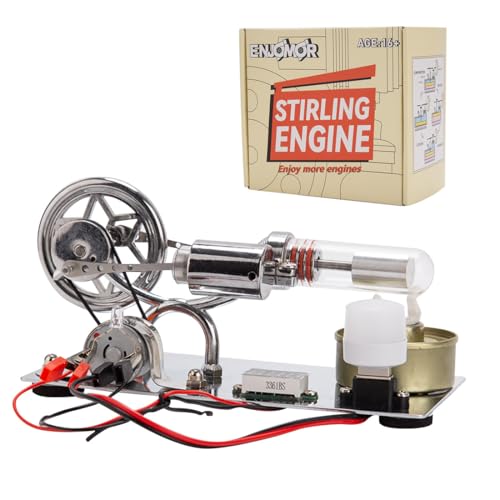During a multitude of 3-5 minute runs in the past several weeks I managed to run a full gallon of gas through the 289. I then took a deep breath and disassembled it so the crank, rods, pistons, liners, cam, and all bearings could be checked for signs of wear. I was interested in finding out if my decision to not use an oil pump had been a mistake because I was considering leaving an oil pump out of my next build. I was happy to find everything looking as good as when first assembled. There was some minor scuffing on several piston skirts, but all the liners were mirror smooth. All bearing surfaces looked good, and there were abnormal clearances among the valves and their cages. A few valve springs had weakened however and were replaced.
The main reason for all the running time was that I had been chasing a pesky inconsistency in the engine's tuning that seemed to be dependent upon ambient and engine temperature and something else that took forever to pinpoint. As time went on, nearly every restart required fiddling with the needle valve to keep the engine running as it warmed up. I eventually found a Delrin spacer around the carb's needle valve to be the source of the problem. Re-making a better fitting spacer solved the problem although I still don't see why. This exact same problem has plagued my last two engines whose carburetors use a similar needle valve design, and those will be looked at as well.
Currently I'm planning a Black Widow V8 for my next build. I purchased a set of castings from Dwight Giles shortly after meeting him at the 2012 Portland Gears Model Engine Show. In a follow-up correspondence with Dwight I received what seems to be the same incomplete documentation package that others have mentioned receiving including several cam and crankshaft design iterations. At that time I decided to set the castings aside until I had a lot more engine building experience.
After finishing the 289, I felt I had the needed experience but was ambivalent about building yet another V-8. The Black Widow's blower was intriguing though, and although it's probably more cosmetic than functional it would be a new experience for me.
I noticed a poster in a current Black Widow thread mentioning that he had gathered up all the engine's known documentation and was offering a free download link to anyone interested. After contacting him through the forum he asked that I send a second request through his work email address, but he still never followed up with a link.
I considered putting the castings up for sale, but since I'll soon be desperate for a new project, I've chosen to make my own version of the engine using just the major original castings. Since its scale is similar to that of the 289, the 289's valve train, distributor, crankshaft, and roller cam should be readily adaptable to it. The addition of a custom bell housing will allow an electric starter similar to the 289's to be added. (I've really grown fond of electric starters.)
I'll likely start the actual build thread in a month or two after completing some of the major SolidWorks modeling and rough machining of the block, intake manifold, and heads. Since this will be my first encounter with sand castings, there will be that to deal with. - Terry

































![DreamPlan Home Design and Landscaping Software Free for Windows [PC Download]](https://m.media-amazon.com/images/I/51kvZH2dVLL._SL500_.jpg)


























